Lighting plays a critical role in the interior design of your restaurant. It can be a low-cost way to completely alter your customer's experience.
In our comprehensive guide, we'll cover why restaurant lighting matters, the core principles to understand and the most popular options around for light sources.
Why is restaurant lighting important?
Restaurant lighting is important because of the role it plays in the experience of your customers. Research has found that lighting can have a direct role in the behaviour and decisions of diners. For example, well-lit environments can promote longer meals, a livelier atmosphere and even healthier dish selection.
Aesthetically pleasing lighting is very important for the customer experience. Things like avoiding glare and choosing the right light sources will ensure that the lighting in your venue enhances your customers' experiences, rather than detracting from them.
Additionally, proper lighting in food preparation is essential for regulatory compliance. This has been identified by organisations such as HACCP International, which operates important certification programs in Australia and New Zealand.
It cites the importance of good lighting in the back of house for maximising productivity and ensuring proper cleaning practices.
Types of lighting for restaurants
When it comes to interior design, there are 3 key types of lighting to be aware of. Each of these 3 forms of lighting plays a crucial role in impacting the customer experience in your venue.
Ambient lighting
Ambient lighting for restaurants is consistent light that is ever-present in a restaurant. Natural light plays an important role in ambient lighting.
An important concept in lighting is direct light and indirect light fixtures. Direct light fixtures shine light directly onto surfaces, while indirect light fixtures bounce this light off ceilings and walls. These fixture types play different but important roles in ambient lighting.
Ambient light is naturally crucial for your venue. It sets the atmosphere for how your restaurant is perceived by your customers.
Task lighting
Task lighting provides the illumination needed to perform particular tasks. This includes lighting provided for diners to read menus and eat their food. This can be achieved through ceiling or wall fixtures, table lamps or even candles.
You also need to provide illumination for your staff to do their jobs. For example, you need to provide bar lighting to allow your bar staff to locate bottles and mix cocktails.
Despite serving a more utilitarian purpose, task lighting cannot be overlooked in restaurant interior design. Your task lighting must blend well with your ambient lighting to create a pleasant aesthetic effect.
Accent lighting
The final core element of restaurant lighting is accent lighting. This refers to illumination that highlights particular elements of a venue's interior design.
This can include picture lights, uplit walls and LED strip lights for your back bar.
Accent lighting helps tie together your ambient and task lighting with other elements of your restaurant's decor. While your guests might not pay too much attention to it, it serves a critical role.
10 options for restaurant lighting
To help you put these principles into practice, we've assembled 10 lighting sources you can utilise in your venue.
1. Natural light
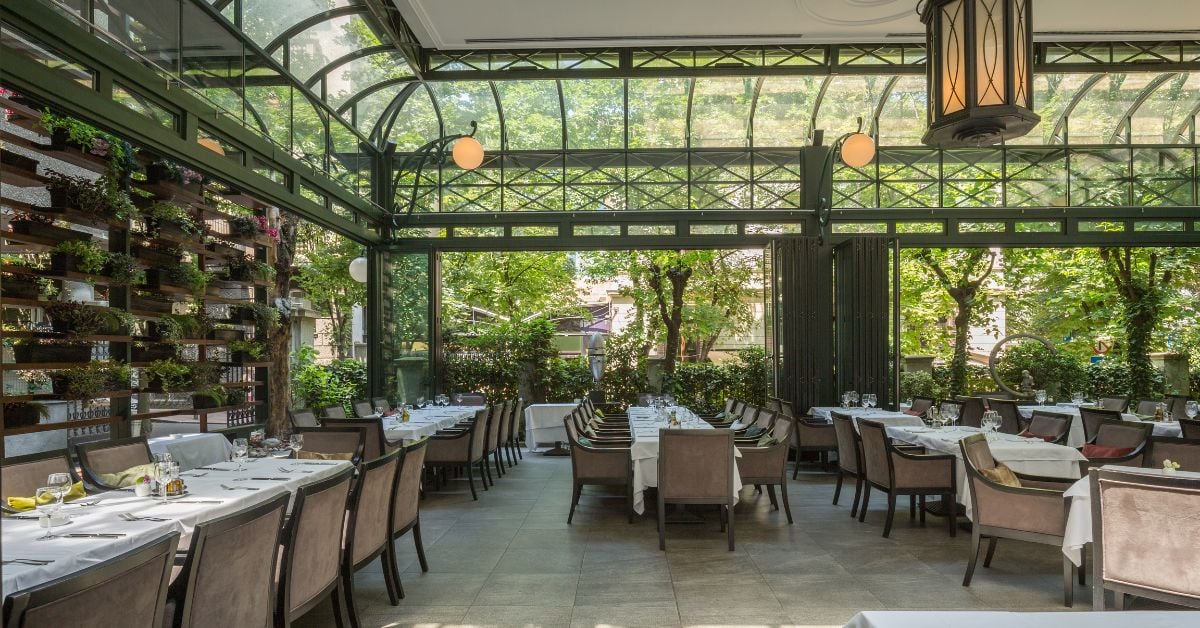
Natural light is an essential component of your restaurant's interior design. You must consider the role that it will play when planning lighting in your venue.
Make sure to use natural lighting during the middle of the day. This can help drive down energy costs in your business and reduce your carbon emissions.
Customers have expressed that colours like yellow, blue and green work well in a restaurant with plenty of natural bright lighting.
Research from Cornell University also found that customers are approximately 16-24% more likely to order healthy foods in brightly lit environments. So, consider how your lunch menu can offer plenty of delicious, health-conscious options to your customers.
2. LEDs

Light-emitting diode (LED) lighting is becoming a staple of the industry. These lights offer myriad benefits, including:
- LED lights use around 75% less energy than halogen light bulbs. They also last about 5 to 10 times longer. This means these lights are more cost-efficient and environmentally sustainable.
- LED lighting can come in different colours, allowing more flexibility when it comes to your lighting strategies.
- LED lights can also be applied in standard fixtures, or come in different shapes and strip lighting. According to Cornell University, they can be used to "create just about any lighting effect you want."
For these reasons, LEDs are a critical lighting component for most restaurants. It can be used to provide simple ambient lighting in minimalist fixtures.
On the other end of the spectrum, you could recreate your restaurant's logo in strip lights to establish a clear brand identity. You might also use LED lights to design a colour zoning scheme to heighten your restaurant’s atmosphere. These versatile lights can find a home in just about any venue.
3. Smart lights
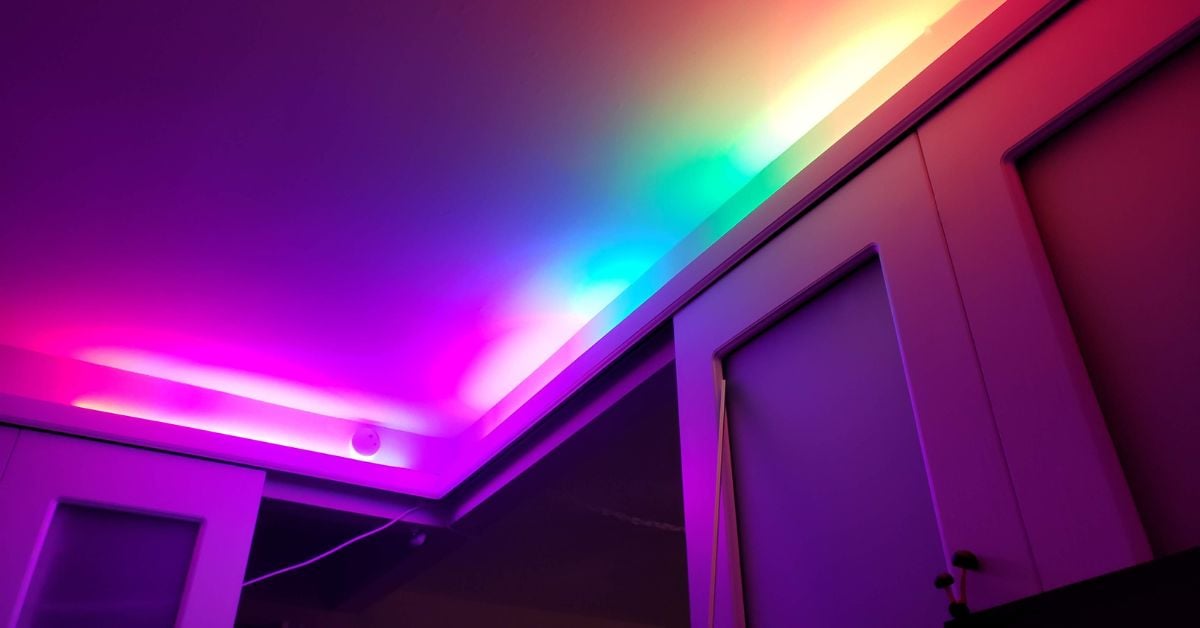
If creativity is your goal, look no further than smart lighting. New smart lighting technologies allow for seamless colour-changing, motion detection and much more.
Many restaurants have already begun to take advantage of what smart lights have to offer. For example, London's Bacchanalia utilises smart lighting to automatically adjust the atmosphere as the day progresses.
This means that without staff needing to lift a finger, customers can experience the perfect transition. Smart lights can create complex lighting scenes that can be controlled remotely. It's ideal for letting your creativity run wild when it comes to designing lighting in your restaurant.
4. Table lamps
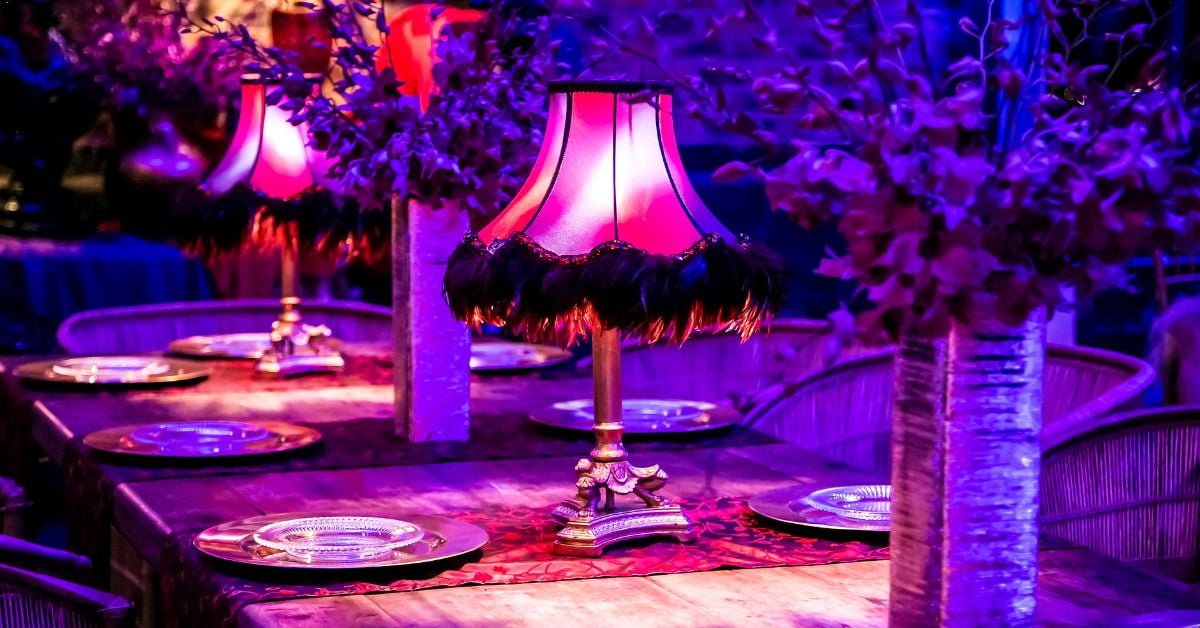
Task lighting can be a very tricky aspect of restaurant lighting. You need to provide the right amount of light for diners to read menus and see their food. However, you don't want to overwhelm them with too much illumination or create glare.
For this reason, table lamps can be an ideal solution. They can help to create an intimate, warm atmosphere which is ideal for dinner service. To really take things up a notch, you can even opt for table candles.
You can even provide your customers with the option of a dimmable lamp, allowing them to take some control of lighting. Just ensure your overall lighting scheme can compensate accordingly.
5. Chandeliers
Chandeliers can be an excellent option, especially for premium venues. They can add tremendous value to your general interior design as centrepieces.
You might choose a classic chandelier to give some antique flair to your venue. You can also take a more modern approach, such as that seen in Melbourne's Doot Doot Doot. Its iconic chandelier has a bubbly design, alluding to the fermentation process of winemaking.
The downside of chandeliers is that you will need to pay a premium to purchase and install them. Even if you are doing the rest of your interior design yourself, you should consult a professional before investing in this area.
6. Pendant lights
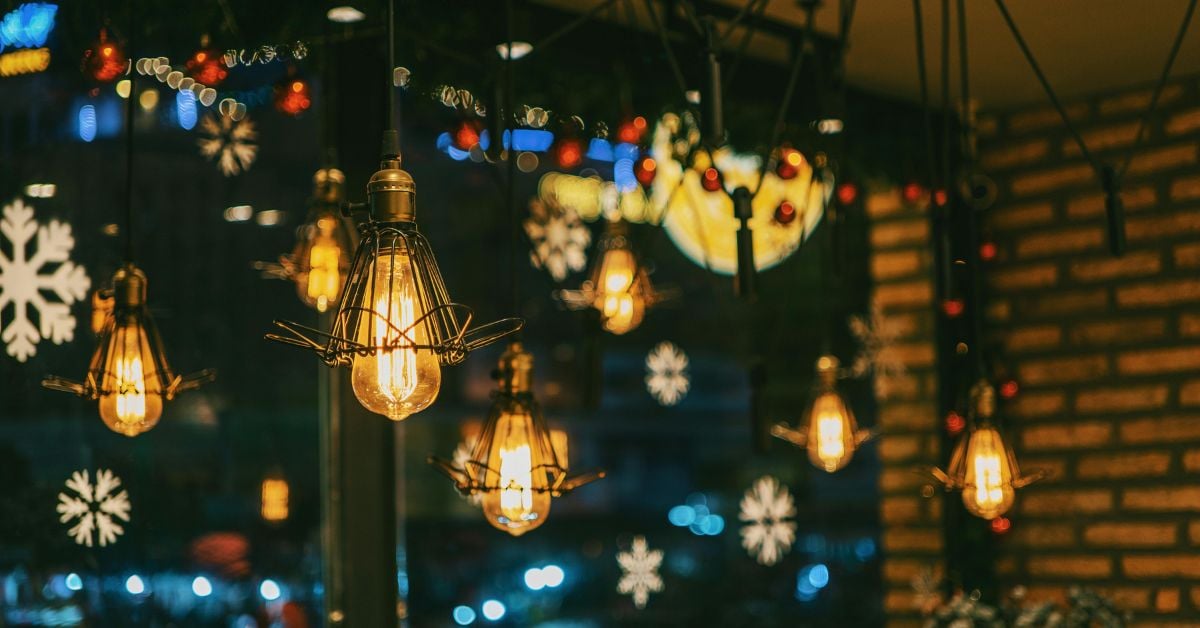
Pendant lights are fixtures that dangle from the ceiling of a restaurant. These are a popular and flexible way to light your restaurant.
Grouping pendant fixtures is a popular way to accentuate your interior design. You can hang various pendants at different levels to create an appealing contrast.
Alternatively, you can create a sense of rigid uniformity by installing your pendants in a strict line. No matter the approach you take, a cluster of pendants is a powerful method of elevating your lighting.
7. Track lighting

Track lighting refers to placing light fixtures – often small spotlights – on a track running on walls or ceilings in a restaurant. Track lighting is generally a relatively low-cost option for restaurant lighting.
You can design your tracks to seamlessly blend into your interior design. Alternatively, you can use more distinctive colours and designs to make your lighting really stand out.
Track lighting also means fixtures can be easily directed, moved and maintained. It is easily focused on particular areas, making it ideal for task or accent lighting.
8. Wall sconces
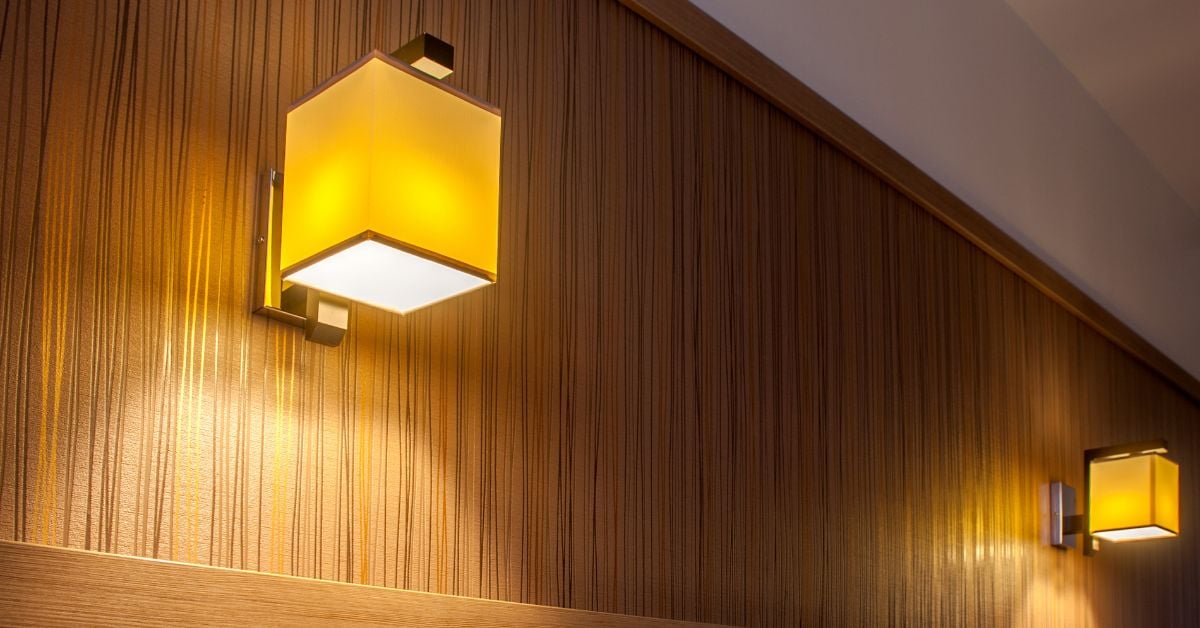
Wall sconces are light fixtures that are attached to walls. They can come in a wide range of styles, allowing them to complement any type of interior design.
Sconces can be applied all over your restaurant, including in hallways or your bar area. You can use the design of your sconces to create a consistent theme around your venue.
Sconces can be used to cast light directly onto a wall. This enables you to highlight textures or materials on your wall. You can use a less decorative wall fixture known as a wall washer to achieve this effect.
By casting lighting on your walls at a sharp angle, you can highlight the texture of surfaces like wood or plaster.
9. Recessed lighting
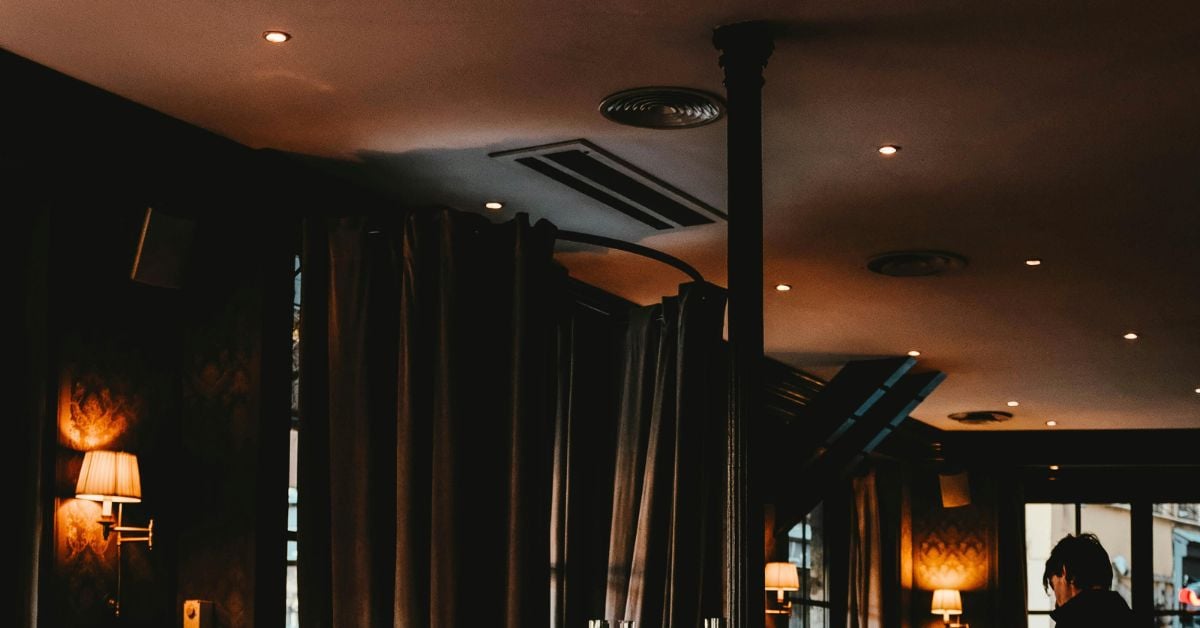
Recessed lighting refers to fixtures that are installed in the ceiling. Recessed lighting is generally minimalist or totally discreet. They can provide downlighting while being barely visible.
As a result, recessed lighting can be ideal for creating ambience or task lighting without the light fixture itself becoming a part of your interior design.
This form of lighting can also be ideal for kitchens, where interior design is much less of a concern. Recessed lights are an unobtrusive way to provide illumination for your staff.
Recessed lighting fixtures are available for affordable prices. However, installing these fixtures in a roof for the first time can be more complex compared to options like wall sconces.
10. Neon lighting
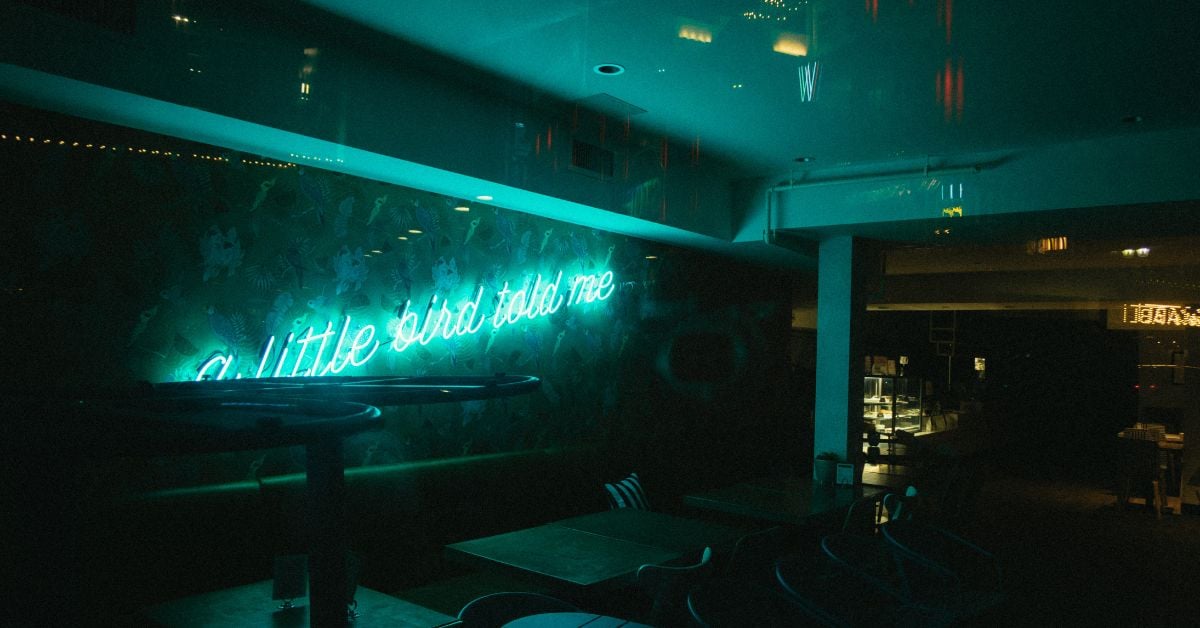
For a truly distinctive approach to restaurant illumination, consider neon lighting. Neon lighting helps to make a major statement with an unmistakable glow and retro-futuristic ambience.
There are plenty of online vendors that can create neon lighting in just about any shape you desire. This makes neon lighting a highly versatile option for your venue.
Neon lighting is also highly photogenic. Having a lounge in your restaurant with a distinctive neon sign is the perfect way to bring more social media buzz to your venue. A simple feature shaped to read “#Selfie” could be highly effective.
While neon lighting might not be a go-to option for all hospitality venues, when used correctly it can have an incredible impact.
Enhance your customers' experience with ResDiary
While lighting and interior design are critical components of your customer's experience, it's all for nothing if your restaurant isn't able to function well. That's why ResDiary is the perfect partner for your venue.
ResDiary's restaurant reservation system will make your paper diary a thing of the past as it manages your bookings with ease. You can even take advantage of the ResPhone automated telephone service.
ResDiary also offers a bevy of additional features and integrations. These include EPOS systems like Stripe, queue management with W8List™, yield management and so much more.
Here's how ResDiary helped Matty Yates, founder and managing director of the Tanoshi Restaurant Group:
"We love the table management. The way we can customise the booking system to suit our specific business needs. The major thing for us is the layout and format is hugely advantageous over other booking systems. The ability to have clear and quick visibility over which seats are available and when is crucial to make the most out of each dining session. It is also so easy for staff to make, edit and update bookings across multiple sites."
Book a demo today and find out how you can satisfy your customers with the help of ResDiary.
Disclaimer: This guide is general in nature and does not take into account your individual circumstances. Before acting on any information, you should consider whether this is right for your business.
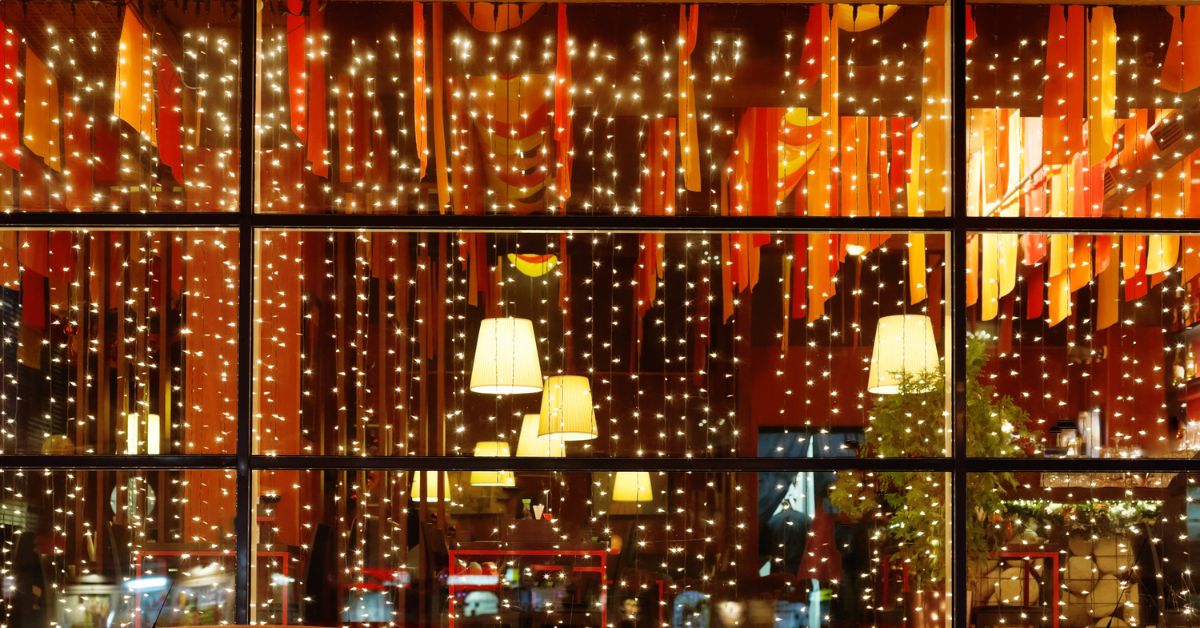

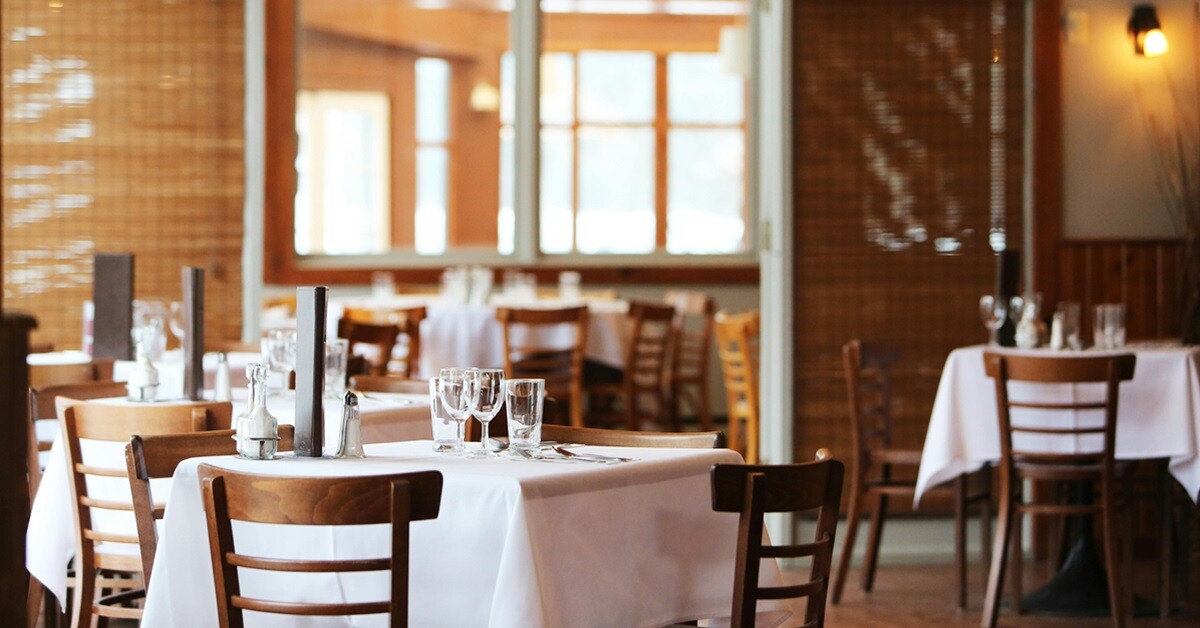

.jpg)